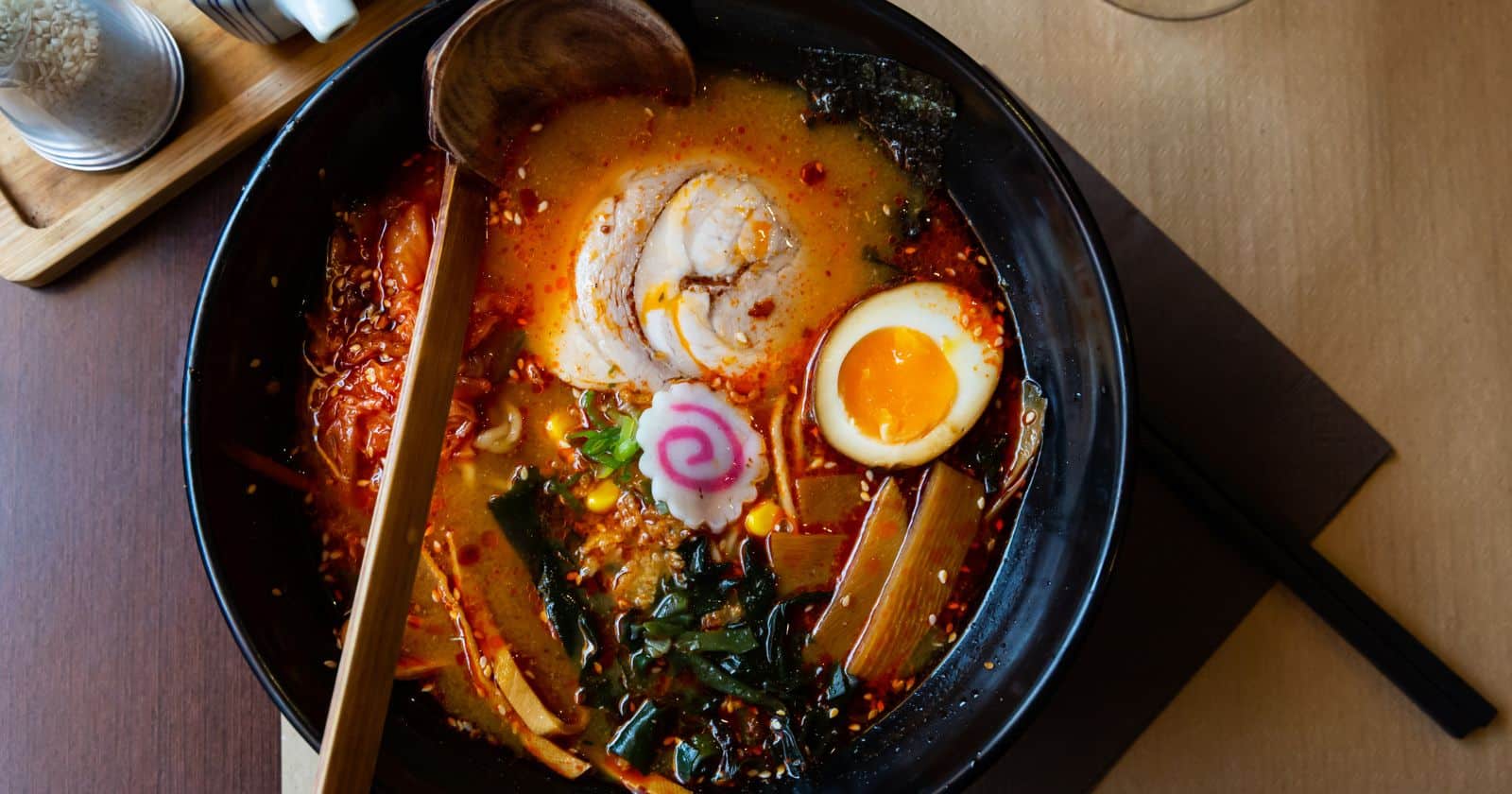Nothing hits the spot like a steaming bowl of ramen. The chewy noodles, savory broth, and assortment of meats and veggies make it the ultimate comforting meal. But if you’ve ever polished off a restaurant ramen bowl and immediately felt parched, you know it can be salty!
So is restaurant ramen actually high in sodium? The short answer is yes. Signature ramen ingredients like soy sauce and miso paste contribute tons of salt. And extra seasoning is often added to punch up the flavor.
While the occasional indulgence is fine, eating high-sodium ramen frequently can negatively impact your health. The good news? You can absolutely recreate ramen’s crave-worthy taste at home with less salt.
In this article, we’ll explore easy ways to prepare healthier homemade ramen. You’ll learn how to make flavorful broths, use natural seasonings, and pile on fresh toppings. Get ready to satisfy your ramen craving without sending your sodium levels through the roof!
Why Does Restaurant Ramen Have So Much Sodium?
To understand why restaurant ramen is so salty, we have to look at some of the key ingredients. Two primary components adding lots of sodium are:
Broth
The broth forms ramen’s flavorful base. Restaurant broth often contains soy sauce or miso, both naturally high in sodium. Chefs may add extra salt to intensify the broth’s savory taste.
Seasoning
Those seasoning of powdered seasoning mix also pack a salty punch. They frequently contain high amounts of sodium to make the noodles more flavored.
Combined, these two elements create a sodium-loaded soup! Now let’s explore how to recreate ramen with less salt.
Restaurant Ramen vs. Instant Noodles: Which is Saltier?
When it comes to high sodium levels, how does restaurant ramen compare to instant noodles?
Overall, restaurant ramen tends to contain more sodium than instant noodles. Here’s a breakdown:
- Restaurant ramen: Can contain over 1000-3000 mg sodium per bowl
- Instant noodles: Typically have around 1600-1800 mg sodium per package
What accounts for restaurant ramen being saltier?
- Large serving sizes – Restaurant bowls contain 2-3x more noodles than a single instant pack
- Double sodium hit – Ramen restaurants use broth and seasoning packets, whereas instant noodles pick one method
- Liberal seasoning – Restaurants may over-season broths to amplify flavor
Of course, sodium counts vary by brand and recipe. But on average, the generous portions and layered seasoning of restaurant ramen make it saltier than instant.
For the lowest sodium intake, both restaurant and instant noodles has low sodium options for you. Be sure to check it before go.
Enjoying Restaurant Ramen Without Excess Sodium
You can still enjoy ramen’s comforting flavors when dining out while moderating your sodium intake. Here are some tips:
- Request low-sodium broth – Many ramen shops offer this lighter option.
- Choose protein toppings – Chicken, tofu, and eggs add flavor without salt.
- Load up on veggies – Bok choy, bean sprouts, spinach, etc. boost nutrition.
- Avoid salt-heavy add-ons – Skip items like seasoned butter, chili crisp, and salty preserves.
- Drink lots of water – Hydrate before and after eating to counterbalance sodium.
- Share the broth – Split a large ramen bowl with a friend to divide up the salty broth.
- Drink only some broth – Only consume a portion of the broth rather than the whole amount.
- Use broth for dipping – Dip your noodles, meat, and veggies into the broth for flavor rather than slurping the entire thing. If you like this way, Tsukemen is recommended.
- Order noodles only – You can request just the noodles and toppings without the soup portion.
- Add extra water – Dilute the broth by adding hot water to your bowl.
- Opt for low-sodium sides – Edamame, seaweed salad, and kimchi offer lighter options.
Health Risks of High Sodium Ramen
Before learning how to reduce the salt in ramen, let’s discuss why it matters. Consuming very salty foods like restaurant ramen frequently can negatively impact your health:
- Increased blood pressure
- Higher risk of heart disease and stroke
- Fluid retention
- Strain on kidneys
To keep your sodium intake in a healthy range, the CDC recommends limiting daily sodium to 2300 mg. A single restaurant ramen bowl could contain your entire day’s worth!
So while an occasional salty indulgence is fine, making lower-sodium ramen at home provides a healthier option. Let’s look at easy ways to do it.
Is Ramen Supposed to Be Salty?
Ramen is well-known for being a salty food. But is it supposed to be salty by nature?
Traditional ramen broth uses ingredients like soy sauce, miso, and salt to create a strong savory flavor. So authentically, yes – ramen is intended to be salty.
However, extremely high sodium levels commonly found in restaurant ramen may be beyond what’s considered traditional. Some chefs may over-season the broth in an attempt to amplify taste.
While salt and umami flavors are integral to ramen, balance is also important in the traditional Japanese philosophy behind the dish.
So you can stay true to the salty ramen experience without going overboard. The key is moderation, controlling sodium levels, and complementing salt with other seasonings.
With homemade broth and natural flavor additions, you can create ramen that’s delicious and more health-conscious.
Tips for Making Less Salty Homemade Ramen
With a few simple tricks, you can recreate ramen’s signature taste at home without skyrocketing your sodium intake.
Make Your Own Broth
Simmering bones, vegetables, and herbs makes a flavorful broth without added salt. Customize it to your taste.
Use Natural Seasonings
Skip the seasoning packet and use ingredients like garlic, ginger, sesame oil, miso, and chili peppers to add flavor.
Choose Low-Sodium Sauces
Opt for low-sodium soy sauce or broth when making the soup base.
Add Nutritious Toppings
Pile on toppings like chicken, mushrooms, spinach, and soft-boiled eggs for bonus flavor.
Use Half the Seasoning Packet
If using instant ramen, use just half or less of the salty seasoning mix.
With these easy tweaks, you can cut sodium while still enjoying delicious ramen flavor. Let’s look closer at some specific methods.
Satisfy Your Ramen Craving the Healthy Way
While restaurant ramen is distinctly salty, you can absolutely recreate its flavor at home with less sodium by:
- Making your own broth using bones, veggies, and herbs
- Using natural seasonings like garlic, ginger, miso, and chili peppers
- Topping with lean proteins and fresh vegetables
- Going light on seasoning packets if using instant ramen
With these tricks, you can whip up a mouthwatering ramen bowl that doesn’t sacrifice taste or nutrition. Enjoy your favorite noodles guilt-free!





